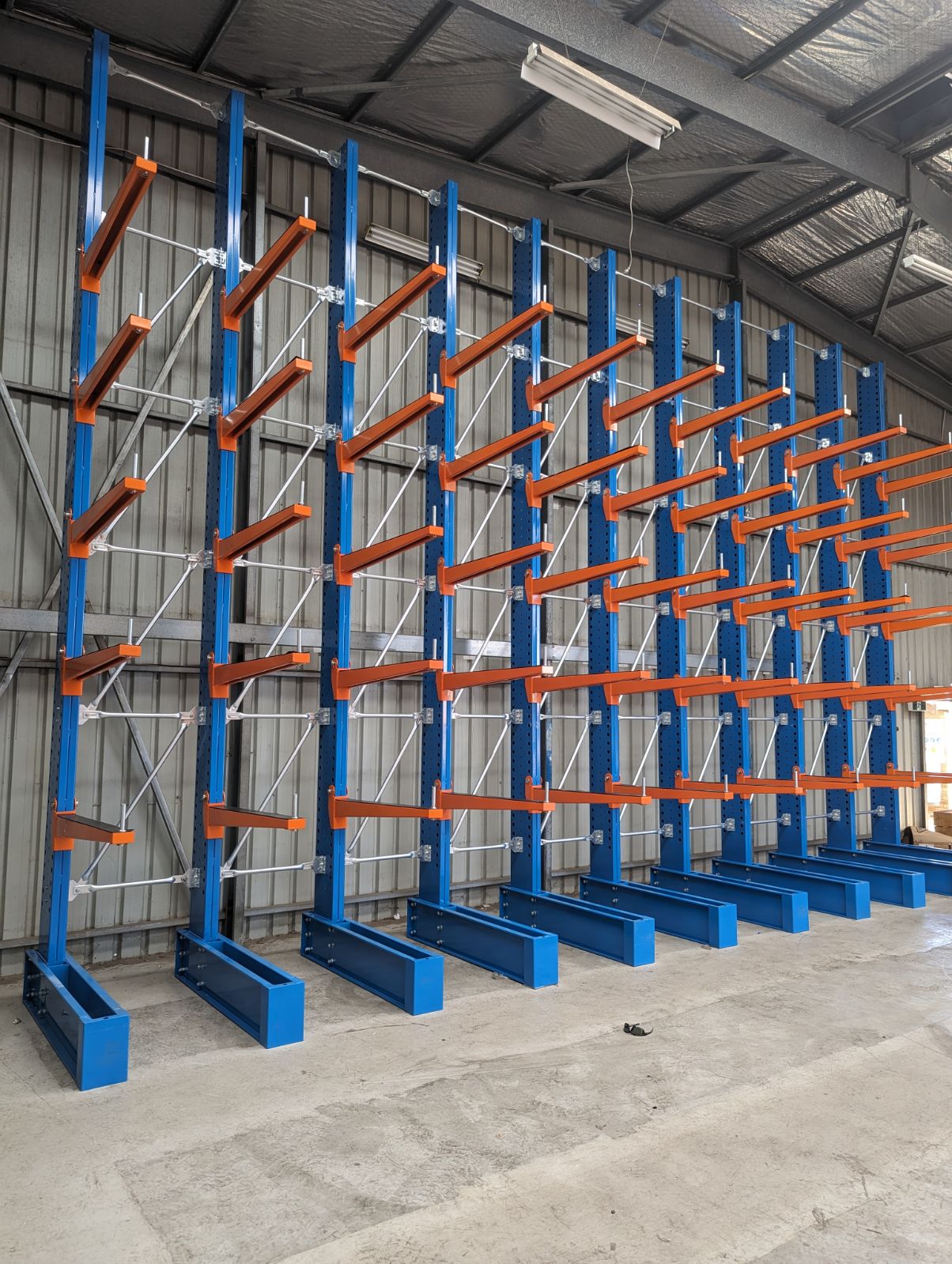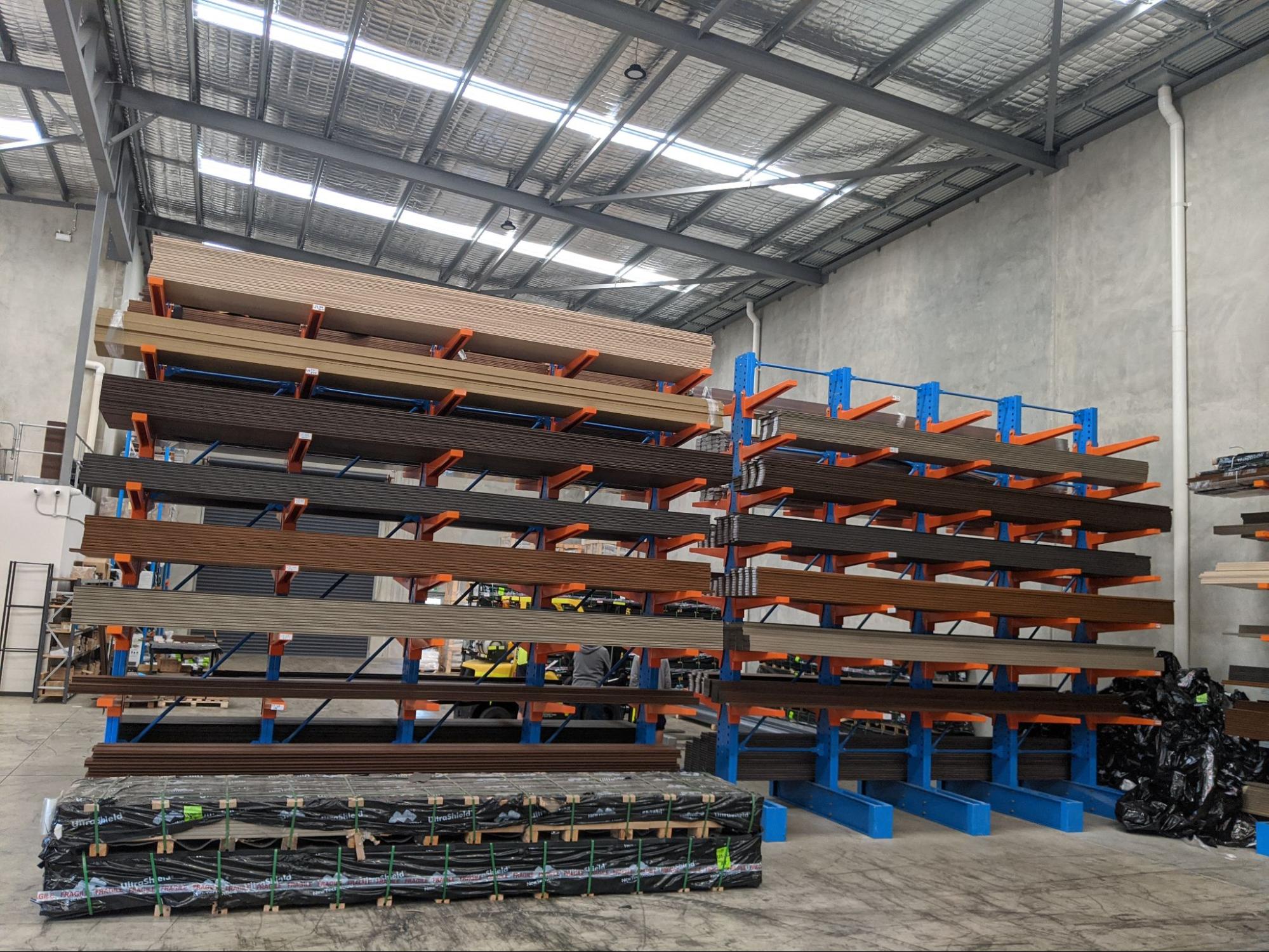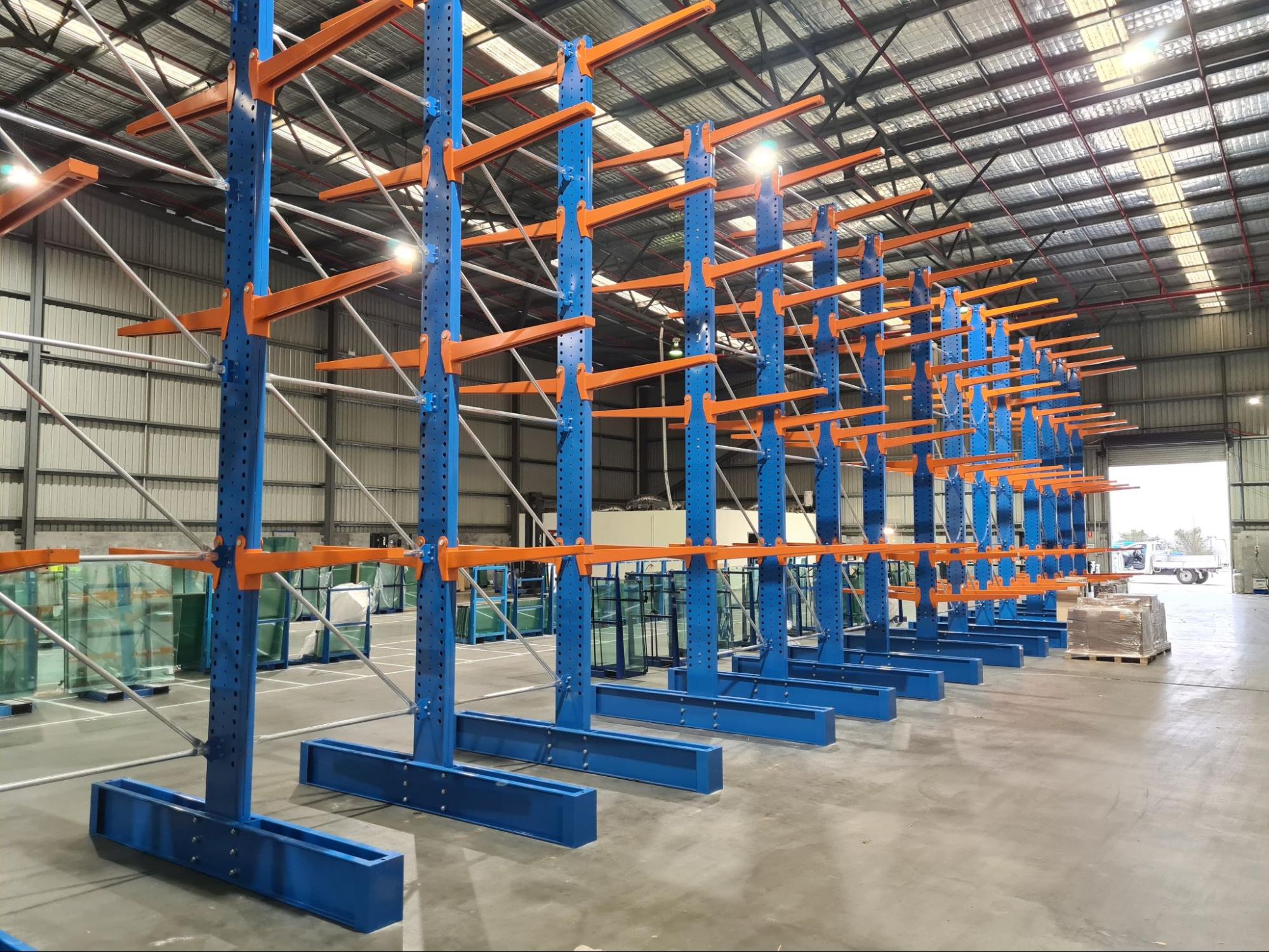If you’re running a warehouse, it’s important to keep things moving. When stock is hard to get to, stacked in the wrong spot or chewing up floor space, the whole operation slows down. For anyone storing long, heavy or awkward gear, standard pallet racking might not cut it. That’s where cantilever racking earns its keep.
Built for the big stuff, cantilever racking gives you open arms and no front columns to get in the way. That means forklifts can load and unload quickly, stock stays organised, and the floor is clear for traffic. It’s a heavy-duty setup that keeps your bulky items easily accessible.
In this guide, we’ll run through what cantilever racking is, the advantages it brings to your warehouse and the different options out there – from handy everyday systems to heavy-duty cantilever racking that handles serious weight. We’ll also look at what to keep in mind when choosing a system, like space, load capacity and safety standards. By the end, you’ll know how to pick the best cantilever racking for your business and why it’s one of the most reliable storage solutions in Australia.
What is cantilever racking?
Cantilever racking is a type of warehouse storage system designed for gear that standard pallet racking just can’t handle. Instead of boxed or palletised goods, it’s made for the long, heavy, and awkward stuff – timber, steel, pipes, plasterboard, furniture and other bulky materials that don’t sit neatly on a pallet.
The difference comes down to the design. Standard pallet racking has front beams that get in the way, while cantilever racking uses vertical uprights with horizontal arms extending out. Without front columns or other obstructions, you’ve got storage that’s just open space. That makes it easy for forklifts to load and unload from the front, cutting down on wasted time and awkward manoeuvres.
A good cantilever racking system is tough, adaptable and keeps the floor clear. Arms can be adjusted to suit different load sizes, and heavy-duty cantilever racking is built to carry serious weight without flexing. For warehouses that deal in steel, timber or other oversized gear, industrial cantilever racking is one of the most practical storage solutions going.
The best cantilever racking for your business will depend on your load requirements, floor space and the type of stock you’re shifting.
Benefits of cantilever racking systems for businesses
Cantilever racking is one of the most practical ways to get control of bulky stock in a warehouse. If you’re running a busy operation, a cantilever racking system can make the job a whole lot smoother.
Makes use of vertical space
The first big win is space. Warehouse cantilever racking makes use of vertical height and clears floor space, so you can fit more gear in without tripping over it. Because there are no front beams in the way, forklifts can slot loads straight in, which means quicker access and less wasted time on awkward angles.
Improves warehouse efficiency
Industrial cantilever racking also makes warehouses more efficient. With clear access and less double-handling, your team can load and unload faster, which keeps jobs moving and reduces downtime. Over a week or a month, those saved minutes turn into saved hours – and reduced costs.
Offers great flexibility
Flexibility is another major benefit. The adjustable arm heights let you store different load sizes on the same rack, so one day you might have long steel lengths and the next it’s odd-sized panels. Heavy-duty cantilever racking is tough, taking serious weight without compromise, which makes it ideal for industrial use where reliability counts.
For businesses that need strong, flexible storage, industrial cantilever racking is one of the best investments you can make. It keeps the place organised, improves efficiency and gives you a system that’ll handle the workload day in, day out.
Types of cantilever racking systems
Not all cantilever racking systems are built the same. The right setup depends on what you’re storing and how tough the job is. With a choice between our C200, C305 and outdoor systems means there’s a racking to suit everything from small workshops through to big industrial yards.
Global’s APEX cantilever racking systems are engineered in Australia to FEM 10.2.09 standards and can be designed for your exact application. Whether it’s indoor warehouse cantilever racking or heavy-duty systems outdoors, you’ll get reliable gear that maximises space and makes loading and unloading easier. With options like bright powder-coated finishes for safety indoors, or galvanised steel for weather protection, these racks are built to suit the way Aussies actually work.
Here’s an overview of the APEX cantilever racking system options:
| Cantilever racking system | Load capacity per arm | Suited industries | Benefits |
| C200 | 260kg – 450kg | Small warehouses, workshops, retail | Space-efficient design with a durable powder-coated or galvanised finish. |
| C305 | Up to 1,000kg | Building supplies, timber yards, general warehouses and distribution centres | Strong build, taller posts, longer arms. Flexible for a wide range of stock. |
| C350, C410-A, C410-B | Customisable | Suited to the same industries as the C305, but designed for operations that require higher capacities, larger stock, or tailored configurations | Fully customisable system for higher-capacity storage. Built to handle oversized, irregular or high-volume stock in demanding environments. |
C200 cantilever racking
Global Industrial’s C200 cantilever racking is a good fit for smaller warehouses, workshops or retail setups where you’re dealing with lighter loads. Think smaller timber lengths, pipes or lighter building materials. It’s available in a range of post heights, with arms that handle up to 450kg, depending on the configuration. Powder-coated finishes make it a smart choice indoors, while hot-dipped galvanised options are ready for outdoor use. Handy accessories like arm and base end stops keep pipes and other round stock in place.
C305 cantilever racking
When you’re storing mid-weight gear like bulkier packs of timber, chipboard or building supplies, you’ll want something tougher. Global’s C305 cantilever racking steps up here. With a higher post section and arm lengths up to 1500mm, it can handle loads up to 1,000kg per arm. Like the C200, you can get it powder-coated for indoor warehouses or galvanised for outdoor yards. It’s versatile, durable and designed to keep mid-weight stock organised and easy to reach.
C350 cantilever racking
For timber yards, steel storage, furniture warehouses and heavy industrial gear, you’ll need heavy-duty cantilever racking. Global’s C350, C410-A and C410-B systems are built for this level of work. They’re custom-engineered for massive loads, and while they come with a longer lead time, they’re worth the wait if you need serious strength and reliability. These racks are made to stand up to industrial punishment, indoors or out.
Invest in the right cantilever racking solution
At the end of the day, the right cantilever racking system will help you run a safer, more efficient warehouse that pays you back over the long haul. Get it right, and you’ll free up space, keep your team moving and know your gear’s stored on a heavy-duty system that’s built to last.
If you’re looking to buy cantilever racking in Australia, Global Industrial has you covered. We supply warehouse racking solutions built for Aussie conditions – from light and medium-duty setups through to heavy-duty cantilever racking for timber, steel and industrial use. Order online in a few clicks, or get in touch with our friendly team to talk through the best setup for your business.
FAQs
1. What is cantilever racking used for?
Cantilever racking is designed to store long, awkward or oversized items that don’t sit neatly on regular pallet racks. Think timber, pipes, steel beams, furniture, carpet rolls or sheet materials. The open-front design and strong arms make it easy to load, unload and organise bulky stock.
2. What are the advantages of cantilever racking?
Space, access and flexibility. Cantilever racking maximises warehouse space by keeping long items off the ground. The arms are adjustable, so you can handle different load lengths and weights. It also makes stock easier to access, speeds up picking and reduces clutter.
3. What industries need cantilever racking?
Any business dealing with long or bulky materials. Timber yards, plumbing suppliers, steel distributors, furniture storage, building materials and industrial warehouses all use cantilever racking to keep stock organised and easy to get to.
4. How much weight can cantilever racking hold?
Cantilever racking capacity comes down to two main things: how much weight each arm can hold and the total load each column (or tree) can carry. Column height and arm length also make a difference, since taller systems with longer arms need to balance capacity with stability.
- The C200 handles between 260kg and 450kg UDL per arm, with each column side rated between 1,400kg and 3,400kg depending on configuration.
- The C305 steps up capacity: 1,000kg to 1,300kg per arm and column capacities ranging from 2,900kg to 6,100kg, depending on the height-to-depth ratio. It’s a strong option for warehouses and yards storing bulkier gear like timber, pipes or metal lengths.
- Designed for higher-capacity storage needs, these systems offer increased column height options and greater total load per column. They’re ideal for setups that need extended arms, extra height or customised layouts to safely handle oversized or heavier stock.
5. Is cantilever racking safe for heavy loads?
Absolutely, when it’s designed and installed correctly. Heavy-duty cantilever racking from trusted suppliers like Global Industrial is engineered to comply with Australian standards. Uprights, arms, bracing and end stops all work together to safely carry heavy, awkward items without risk of tipping or collapse.






